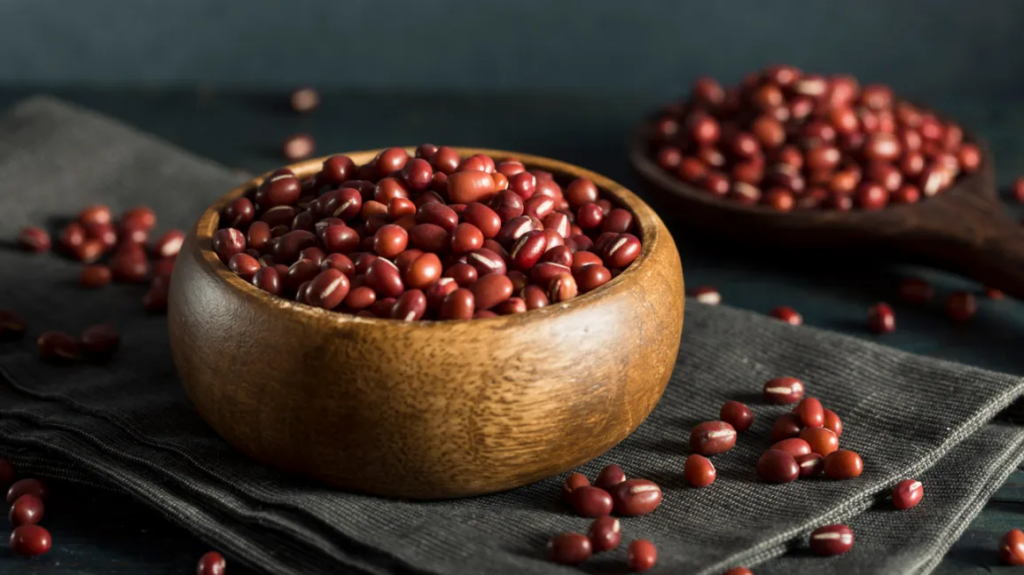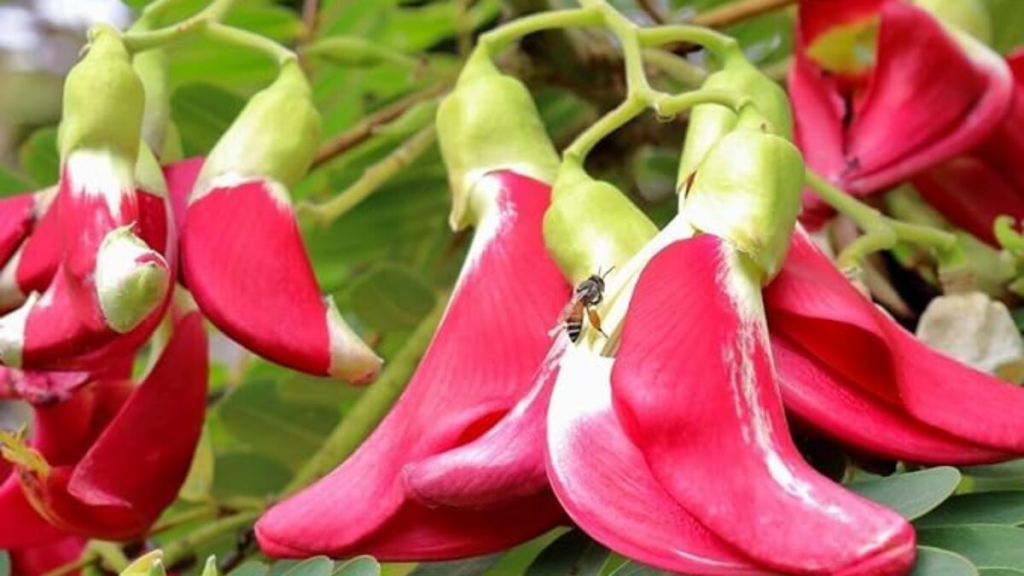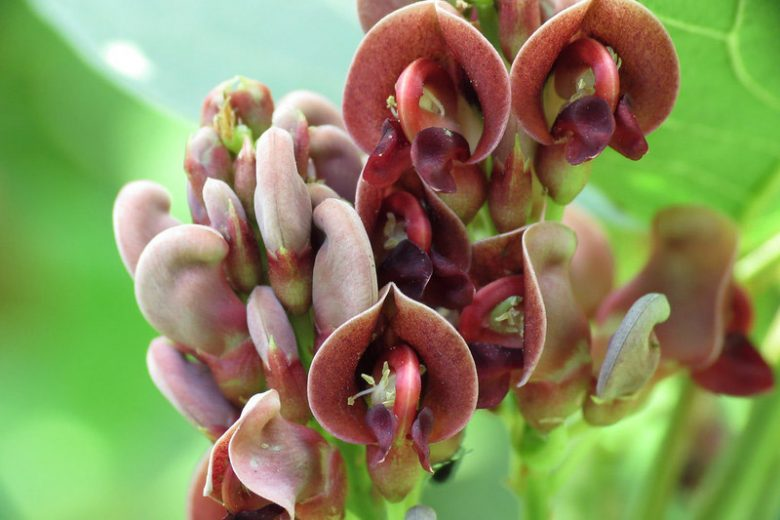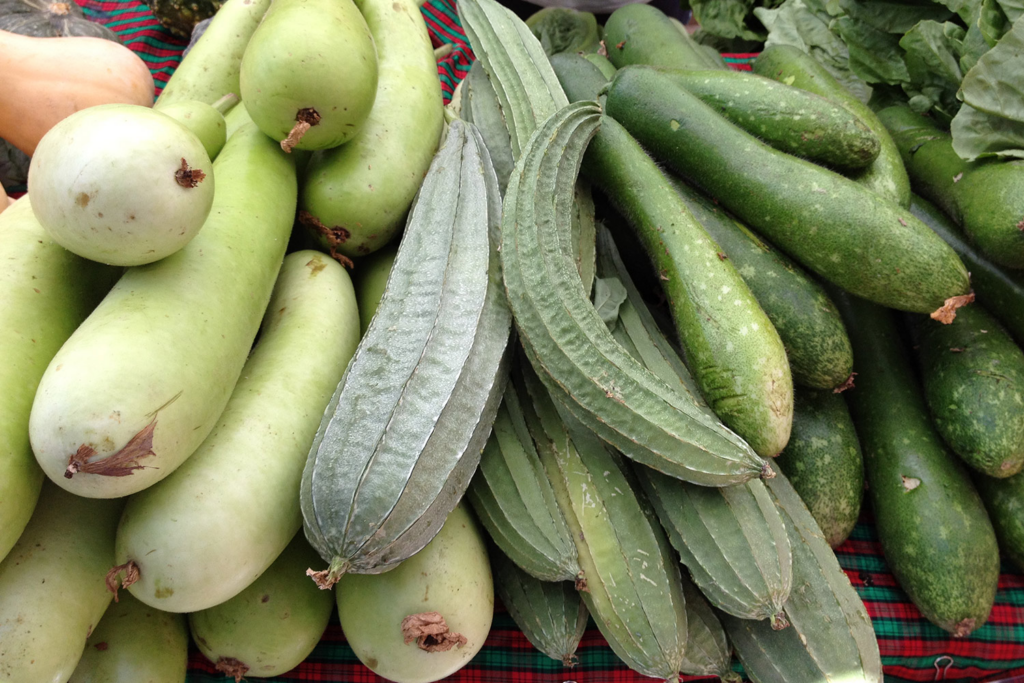Are you looking to expand your vegetable vocabulary? Exploring vegetables that start with the letter “A” can introduce you to a world of nutritious and tasty options you might not have known about. From vibrant artichokes to crunchy asparagus, there’s a surprising variety waiting to be discovered. Let’s dive into these delicious and diverse vegetables that begin with “A”!
1. Acacia Leaves

Acacia leaves are edible foliage from certain acacia trees, commonly used in Southeast Asian cuisine. They add a unique flavor and are nutritious.
Nutritional Benefits: Per 100g, calories: 23 kcal, rich in vitamins A and C, calcium, iron, high in fiber, and contain anti-inflammatory compounds.
How to Eat or Use It: Best used fresh in salads or cooked dishes for flavor and nutrients.
2. Acorn Squash

Acorn squash is a winter vegetable with a distinctive acorn shape. Its sweet, creamy flesh makes it a popular choice during the cold months.
Nutritional Benefits: Per 100g, calories: 52 kcal, high in vitamin C, potassium, fiber, and antioxidants that support immune health.
How to Eat or Use It: Roast, bake, or stuff acorn squash as a hearty side dish or snack.
Diet Compatibility: Low-calorie; pairs well with herbs like thyme or a drizzle of olive oil.
3. Adzuki Bean

Adzuki beans are small red beans loved in East Asian dishes. They are sweet and nutritious, often used in desserts or savory meals.
Nutritional Benefits: Per 100g, calories: 128 kcal, good source of protein, fiber, folate, and antioxidants.
How to Eat or Use It: Cook in soups, stews, or make sweet red bean paste for desserts.
Diet Compatibility: Vegetarian-friendly, suitable for plant-based diets.
4. Agathi (Sesbania Grandiflora)

Agathi, also called Sesbania grandiflora, has edible flowers and leaves used in South Asian cuisine. It adds a fresh, slightly bitter taste.
Nutritional Benefits: Per 100g, calories: 20 kcal, high in vitamins A and C, calcium, and antioxidants.
How to Eat or Use It: Use fresh leaves and flowers in salads, curries, or stir-fries.
5. Ahipa

Ahipa is a root vegetable from South America resembling jicama, with a crunchy texture and mildly sweet flavor.
Nutritional Benefits: Per 100g, calories: 38 kcal, rich in fiber, vitamin C, and low in fat.
How to Eat or Use It: Best raw in salads, or lightly cooked in stir-fries.
Diet Compatibility: Low-calorie, suitable for weight loss diets.
6. Alfalfa Sprouts
Alfalfa sprouts are tiny, nutritious shoots often added to salads and sandwiches for crunch and fresh flavor.
Nutritional Benefits: Per 100g, calories: 23 kcal, high in vitamins C and K, minerals like calcium and iron, and antioxidants.
How to Eat or Use It: Raw in salads, sandwiches, or wraps for added nutrition.
Diet Compatibility: Very low in calories, suitable for keto and vegetarian diets.
7. Akudjura
Akudjura, also known as bush tomato, is an Australian native used dried or ground for flavoring. It has a tangy, salty taste.
Nutritional Benefits: Per 100g, calories: 78 kcal, contains vitamins A and C, minerals, and antioxidants.
How to Eat or Use It: Use as seasoning in meat dishes, sauces, or dried mixes.
8. Amaranth Leaves & Seeds

Amaranth leaves and seeds are highly nutritious and consumed across many cultures for their protein, vitamins, and iron content.
Nutritional Benefits: Per 100g, calories: 86 kcal, rich in vitamins A, C, iron, calcium, and antioxidants.
How to Eat or Use It: Use cooked as greens or add seeds to porridges and baked goods.
Diet Compatibility: Suitable for vegan and gluten-free diets.
9. Ambercup Squash

Ambercup squash is a small winter squash with orange flesh, similar in flavor to butternut squash, often used in soups and stews.
Nutritional Benefits: Per 100g, calories: 45 kcal, high in vitamins A and C, fiber, and antioxidants.
How to Eat or Use It: Roast, boil, or mash as a side or ingredient.
10. American Groundnut (Apios americana)

This native North American tuber is edible, rich in starch, and was traditionally foraged by indigenous peoples.
Nutritional Benefits: Per 100g, calories: 82 kcal, high in carbs, fiber, and some protein.
How to Eat or Use It: Cook and eat like potatoes or mash it as a side dish.
11. Arikara Squash
An heirloom squash cultivated by Native American tribes, with sweet flesh ideal for roasting or baking.
Nutritional Benefits: Per 100g, calories: 40 kcal, vitamins A and C, fiber, and antioxidants.
How to Eat or Use It: Roast or puree into soups and sauces.
12. Armenian Cucumber
Although technically a melon, the Armenian cucumber is treated culinarily as a cucumber, with a crisp texture and mild flavor.
Nutritional Benefits: Per 100g, calories: 16 kcal, hydrating with vitamins A, C, and minerals.
How to Eat or Use It: In salads, pickles, or as a fresh snack.
13. Arracacha (Peruvian Carrot)
This starchy root from the Andes has a sweet flavor and creamy texture, used in soups and stews.
Nutritional Benefits: Per 100g, calories: 70 kcal, rich in carbohydrates, vitamin C, and potassium.
How to Eat or Use It: Cook and mash or add to soups.
14. Arrowhead (Sagittaria spp.) / Broad-leaf Arrowhead
Arrowhead tubers are edible aquatic plants with a potato-like texture, consumed in various cuisines.
Nutritional Benefits: Per 100g, calories: 82 kcal, good source of carbs and fiber.
How to Eat or Use It: Boil or fry like potatoes.
15. Arrowroot
Arrowroot is a starchy rhizome used for thickening sauces and baking. It is gluten-free and easy to digest.
Nutritional Benefits: Per 100g, calories: 357 kcal, high in carbohydrates and contains antioxidants.
How to Eat or Use It: Used as a thickener in cooking or in baking recipes.
16. Artichoke
Globe artichoke is valued for its tender heart and edible leaves, popular in Mediterranean cuisine.
Nutritional Benefits: Per 100g, calories: 47 kcal, high in fiber, vitamin C, antioxidants, and minerals.
How to Eat or Use It: Steam, grill, or bake for appetizers or sides.
17. Arugula
Arugula, also known as rocket, is a peppery green used in salads and sandwiches for a spicy kick.
Nutritional Benefits: Per 100g, calories: 25 kcal, rich in vitamins A, C, K, and antioxidants.
How to Eat or Use It: Raw in salads, added to sandwiches, or lightly sautéed.
Diet Compatibility: Low-calorie, keto-friendly, pairs well with olive oil and lemon.
18. Asparagus
Asparagus is a tender spring vegetable enjoyed worldwide, known for its distinct flavor and health benefits.
Nutritional Benefits: Per 100g, calories: 20 kcal, high in vitamins A, C, E, K, folate, and antioxidants.
How to Eat or Use It: Steamed, grilled, roasted, or added to stir-fries and salads.
Diet Compatibility: Low in calories, keto-friendly, great with lemon and garlic.
19. Asparagus Pea / Winged Pea
This legume produces small pods resembling asparagus tips when cooked, offering a crunchy texture and fresh flavor.
Nutritional Benefits: Moderate calories, high in protein, vitamins A and C, and fiber.
How to Eat or Use It: Cook briefly in stir-fries or salads for a nutritious crunch.
20. Ash Gourd / Winter Melon

Waxy, large gourd used across Asia, valued for its mild taste and hydrating properties.
Nutritional Benefits: Per 100g, calories: 13 kcal, contains vitamin C, fiber, and antioxidants.
How to Eat or Use It: Boiled, added to soups or stir-fries.
21. Asian Greens

Includes various leafy greens like bok choy, tatsoi, mizuna, known for their nutritional density and versatility.
Nutritional Benefits: High in vitamins A, C, K, calcium, and antioxidants.
How to Eat or Use It: Stir-fried, steamed, or added fresh in salads.
22. Aubergine (Eggplant)
Eggplant is a versatile vegetable with a rich, slightly bitter flavor, used in many cuisines worldwide.
Nutritional Benefits: Per 100g, calories: 25 kcal, high in fiber, vitamins B1, B6, and antioxidants.
How to Eat or Use It: Grilled, roasted, fried, or added to stews.

Jean Smith is a fitness enthusiast and blogger who focuses on fitness and a healthy lifestyle. She is passionate about assisting people in living healthier lifestyles and is constantly on the lookout for new and creative methods to stay fit and healthy. Her articles are excellent resources for anyone interested in improving their health and fitness.
